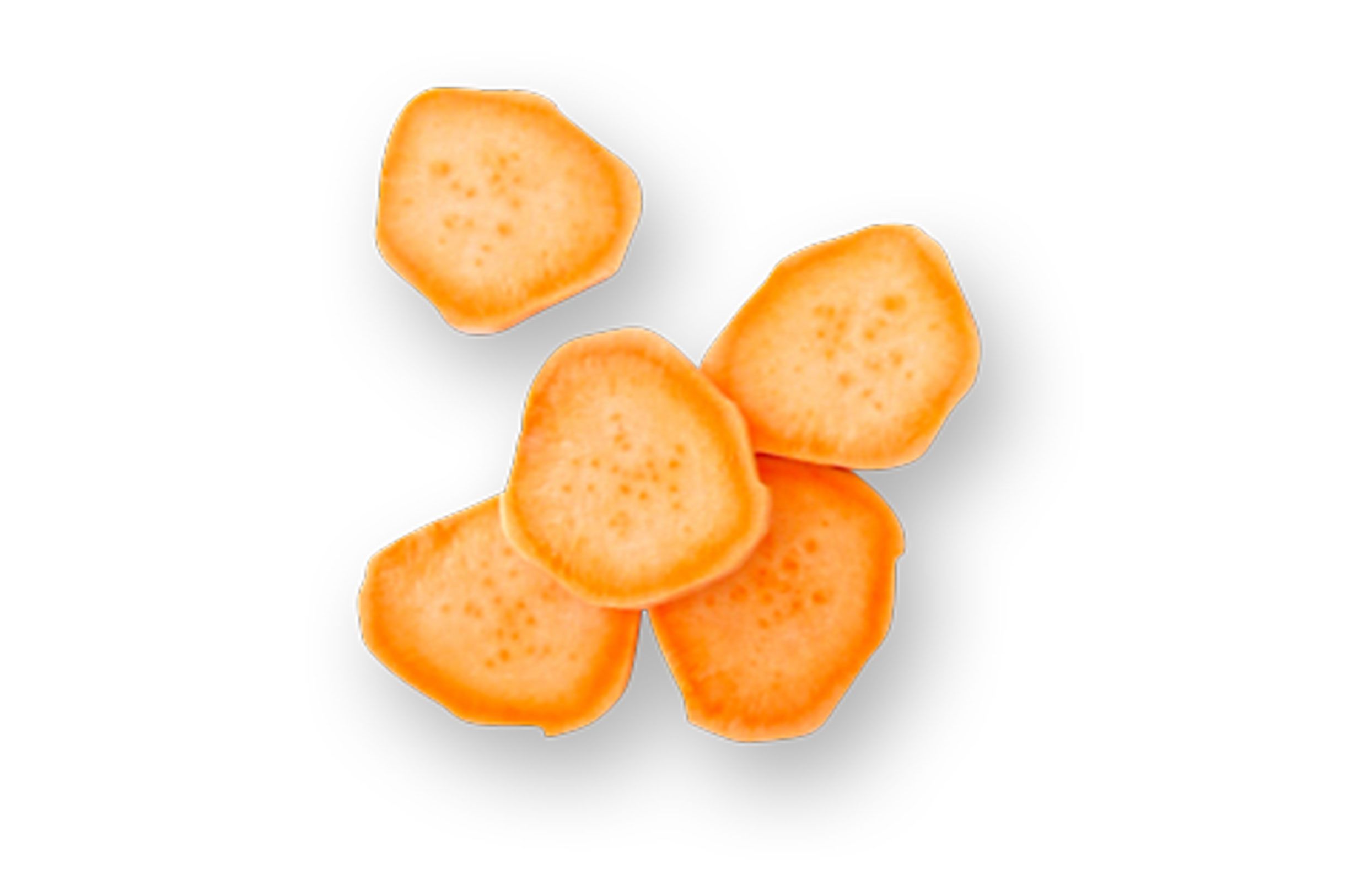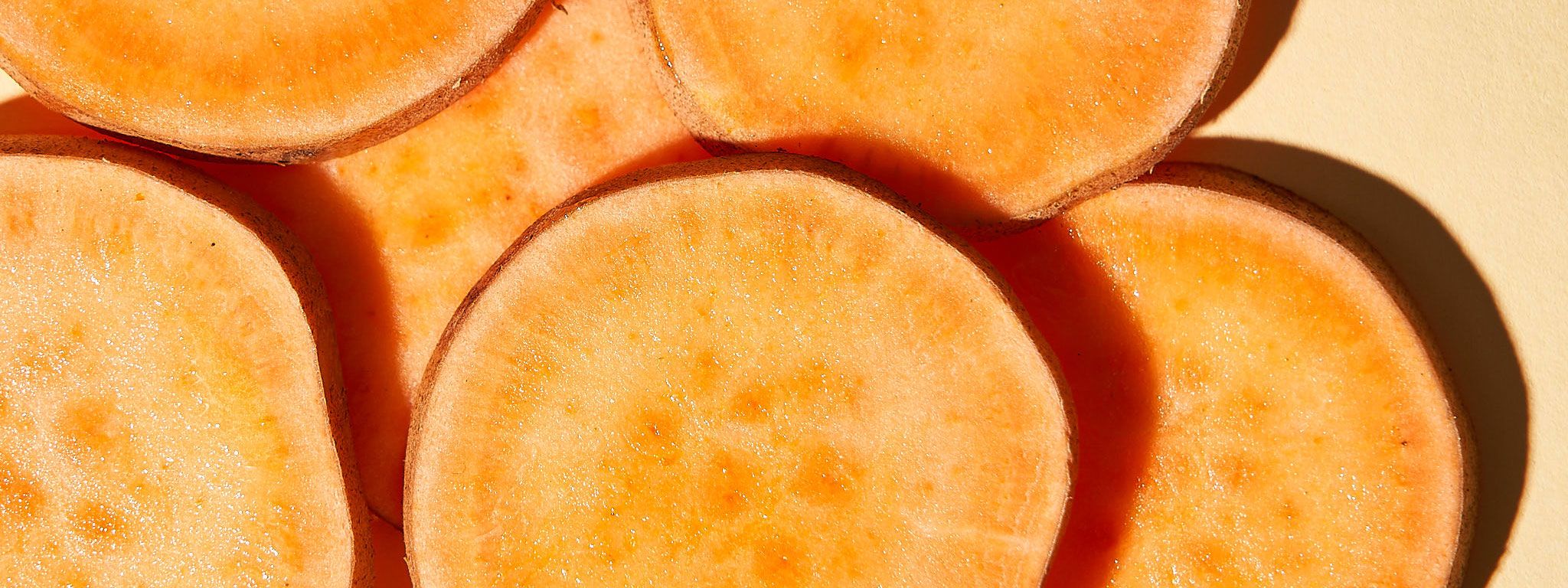Sweet potato
Sweet nutrients
Intro
Anyone who prefers things sweet but healthy will love a sweet potato! You’ve probably noticed the recent sweet potato fries hype that's taken fast food chains by storm and is frequently preferred over regular potatoes. Why this food has become so popular, how you can prepare it and what the health benefits are will be explained below!

What are sweet potatoes?
The sweet potato is a winch plant (Convolvulaceae) and therefore a relative of water spinach more than a regular potato. They love the warmth and are very vulnerable to cold temperatures.
Sweet potatoes can be several kilos heavy.
They are widespread in South America and Africa and are used as a diet staple in these regions.
In addition to its pleasant flavour, sweet potatoes have an impressive nutrient density. The key ingredient is Caiapo, which helps regulate blood sugar and cholesterol levels.

Where does the sweet potato come from?
Similar to regular potatoes, the sweet potato has been cultivated for thousands of years, primarily in tropical regions of Central America. They were brought to Europe in the 15th century by the Spanish. Today, the main global exporter is China.
Which varieties are there?
Sweet potatoes can be round or spindle-shaped and grow up to 30cm in length. Their colour varies from white, yellow, orange, pink to purple. Their leaves are heart shaped and light or dark green.
Beauregard
-High yield
-Orange flesh
-Flavour: very sweet
Bonita
-White flesh
-Thin peel
-Flavour: sweet
Evangeline
-Orange flesh
-Flavour: veryweet
-Suitable for desserts
Murasaki
-Dark red/purple peel
-White flesh
-Flavour: chestnut-like
Orleans
-Orange flesh
-Similar sugar content to Beauregard
-Flavour: sweet
When are they in season?
Starting from September and until it gets cold and frosty. You can tell when they’re ready to harvest by the yellow colour.
Our tips for how to enjoy sweet potato:
Salads, risottos, curries, purees and oven vegetables
They are also great as:
Fries
Chips
Roasted potatoes
Vegan burger patties
The texture of a sweet potato is slightly grainy. Its a versatile ingredient that can also be consumed raw. The best cooking methods are baking, steaming, roasting or grilling.
The leaves of a sweet potato plant can also be eaten.
Remember: sweet potatoes should be stored in a cool, dry area and should be consumed fairly quickly.
Sweet potato nutrition facts per 100g:
| Typical Values | 100g |
|---|---|
| Calories | 90 |
| Fat | 0.1g |
| Carbohydrates | 21g |
| Fibre | 3.3g |
| Sugar | 6.5g |
| Protein | 2g |
Nutrients found in sweet potato:
Caiapo
Vitamins:
Vitamin A, Vitamin B (B1, B2, B3, B5, B6, B7, B9, B12), Vitamin C, Vitamin D, Vitamin E, Vitamin K, Beta Carotene, Biotin and Folic Acid
Minerals:
Calcium, Chloride, Iron, Fluoride, Iodide, Potassium, Copper, Magnesium, Manganese, Sodium, Phosphorus, Sulphur and Zinc

